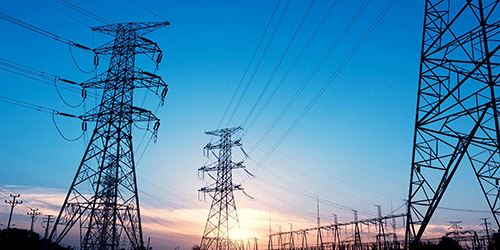In 2020, an amount of N$500 million was allocated from the long run marginal cost fund to partially fund the construction of Namibia Power Corporation renewable energy plants.
Of this, N$342 million was allocated to the 20MW solar PV plant at Omburu.
The remaining amount of N$158 million will be used for part funding of the 40MW NamPower owned wind plant to be procured soon.
All these are efforts to make sure Namibia has enough electricity, rather than depending on the importation of electricity.
This was stated by the acting CEO of the Electricity Control Board (ECB) Rachel Boois last week while announcing an increase in the average bulk tariff by 7.3%.
This is from the currently approved tariff of N$1.6982 per kilowatt-hour to N$1.8222 per kilowatt-hour for the period 2022/2023, due to be effective on 1 July 2022.
According to the electricity utility’s 2021 annual report, NamPower imported 67.4% of power from neighbouring countries and the Southern African Power Pool (SAPP) market to meet the country’s electricity demand.
This is an increase from 59% of the 2019/20 financial year.
“The ECB is pleased to inform the public that the construction of the NamPower Omburu solar PV plant is completed, and the plant was commissioned end of March 2022. Since the plant was customer funded, and only minimal operational costs are recoverable through the approved tariff, the NamPower Omburu Solar PV plant is currently the cheapest source of electricity in our energy mix, thus contributing to a reduction in the tariff increase,” explained Boois.
Furthermore, over the years, the tariff included an amount for long-run marginal cost (LRMC) purposes.
She clarified the LRMC is intended to ensure a smooth tariff path for the future, especially when NamPower is experiencing cash flow challenges due to expensive power supply options or building new power plants.
“The LRMC funds may be used to cushion customers from unexpected tariff hikes or in situations when the economy is depressed and/or to build new power plants that will ensure an affordable projected tariff path,” added the acting CEO.
For the past two years, a total amount of N$85 million was made available to mitigate the impact of the tariff increase on consumers and the economy.
Boois added, in accordance with the tariff methodology, NamPower will not be allowed a return and depreciation on the assets created using the N$500 million LRMC contribution, and this will result in a total net saving to the customers of approximately N$1 billion over 30 years.
This, she said, will assist in improving the affordability of electricity to end users.
Due to the current depressed economic situation, no provision was made for the recovery of the LRMC as part of the tariff for the 2022/2023 period.
The ECB will in future consider reinstating the recovery of the
LRMC.


